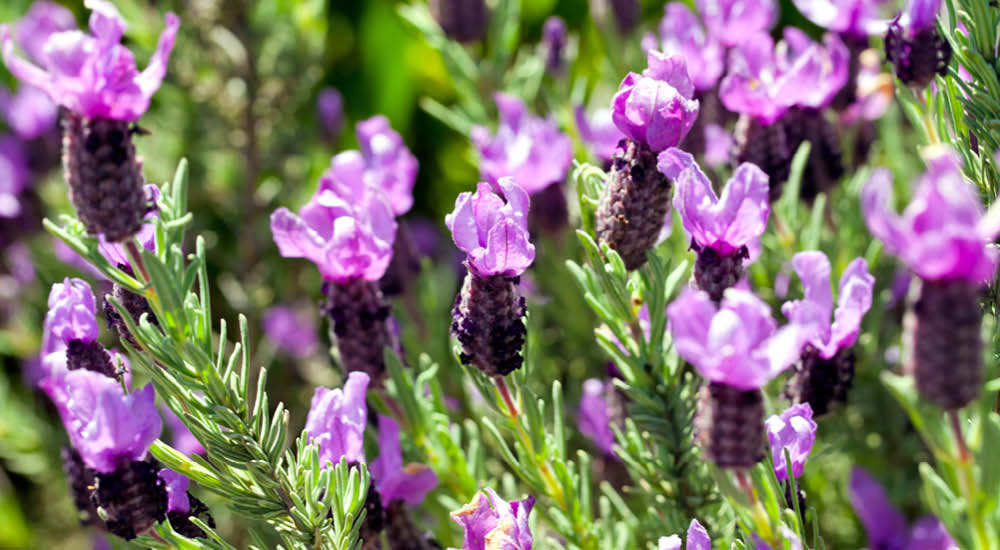Cultivated for more than 400 years, French Lavender offers intense fragrance and unforgettable flower spikes.

French Lavender are popular plants for adding summer colour in sunny mixed borders or pots. Originating from the Mediterranean, they thrive in free draining soils and are very drought tolerant. They survive well in a sunny corner or against a warm wall and make an excellent container plant that can be brought under cover in winter.
Lavender’s distinctive scent can work wonders for deterring garden pests, such as aphids. Along with other aromatic herbs, lavender confuses pests and it’s a great idea to plant them in and around vegetable beds. There have also been reports of lavender deterring codling moth when planted around fruit trees.
Pruning should be undertaken every year to keep them compact, either at the end of the summer or in early spring. On established plants use secateurs to remove flower stalks and about 2.5cm (1in) of the current year’s growth, making sure that some green growth remains. Lavender does not break readily from old wood and neglected specimens are best replaced.
French Lavender looks great planted in drifts or as an edging plant, where their flowers provide forage for bees and other beneficial insects. Their architectural flowers go well with other sun-loving and drought tolerant plants such as Oregano, Celosia, Rudbeckia and Rosemary.
- Prefers a hot, sunny position in a free draining soil
- Excellent for drought-tolerant, coastal and gravel gardens
- Good for bees and other beneficial insects
- Prune in late summer or early spring
- Generally disease free but watch out for root rot in heavy, wet soils


